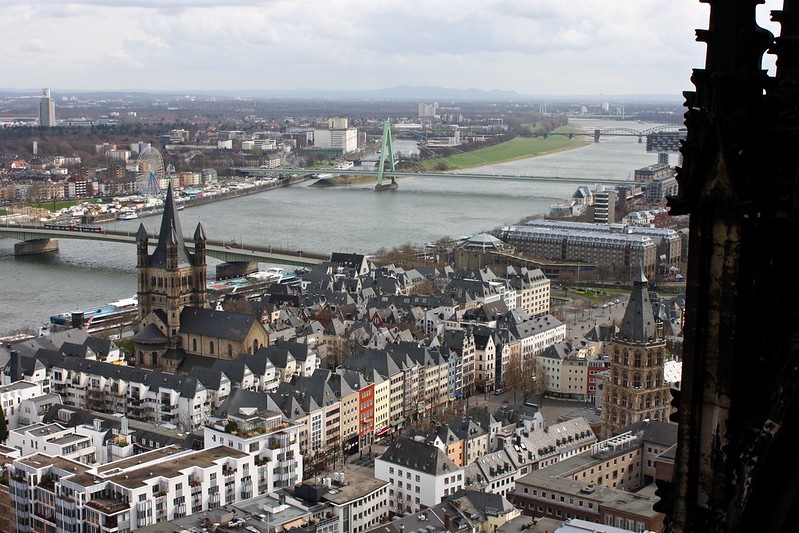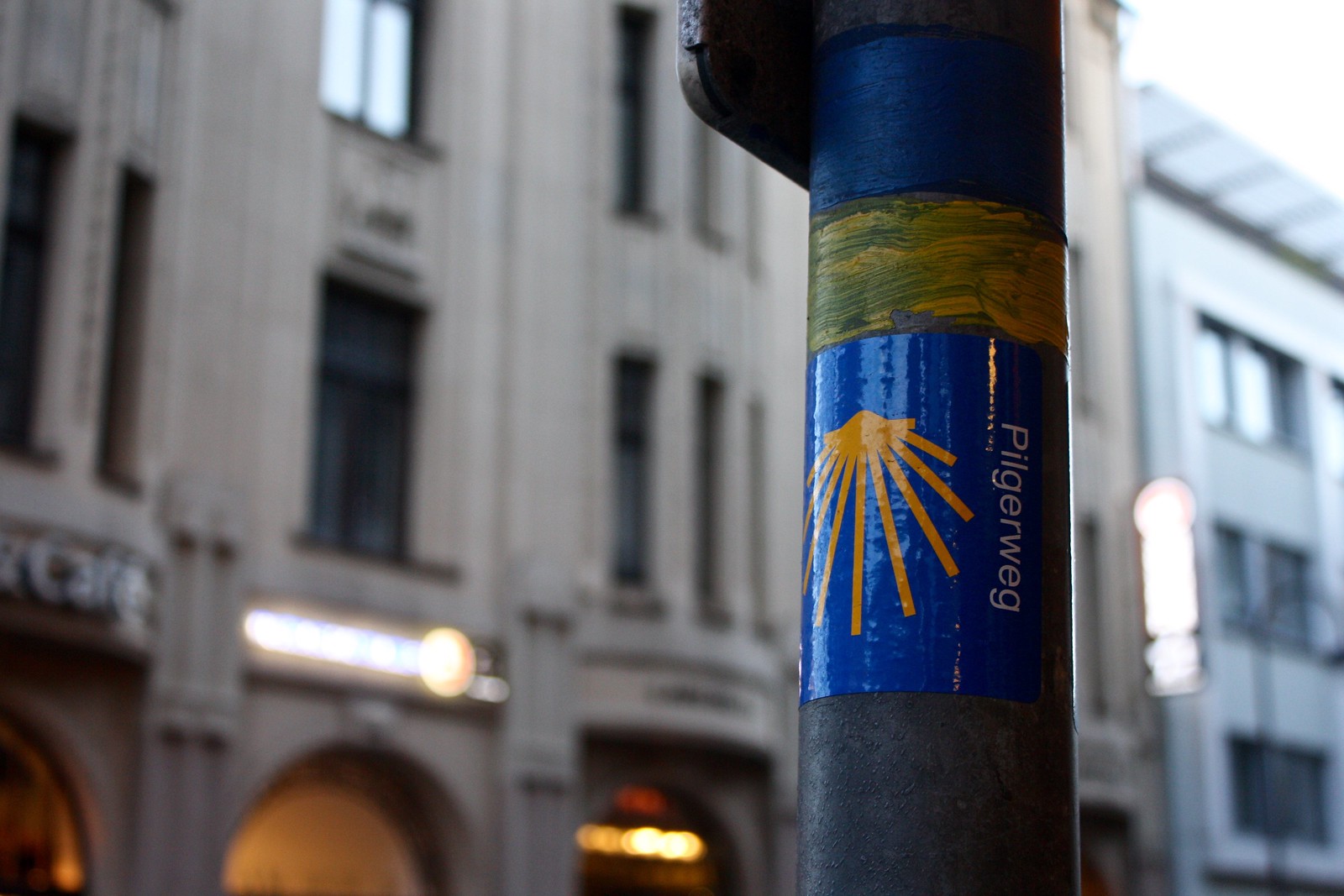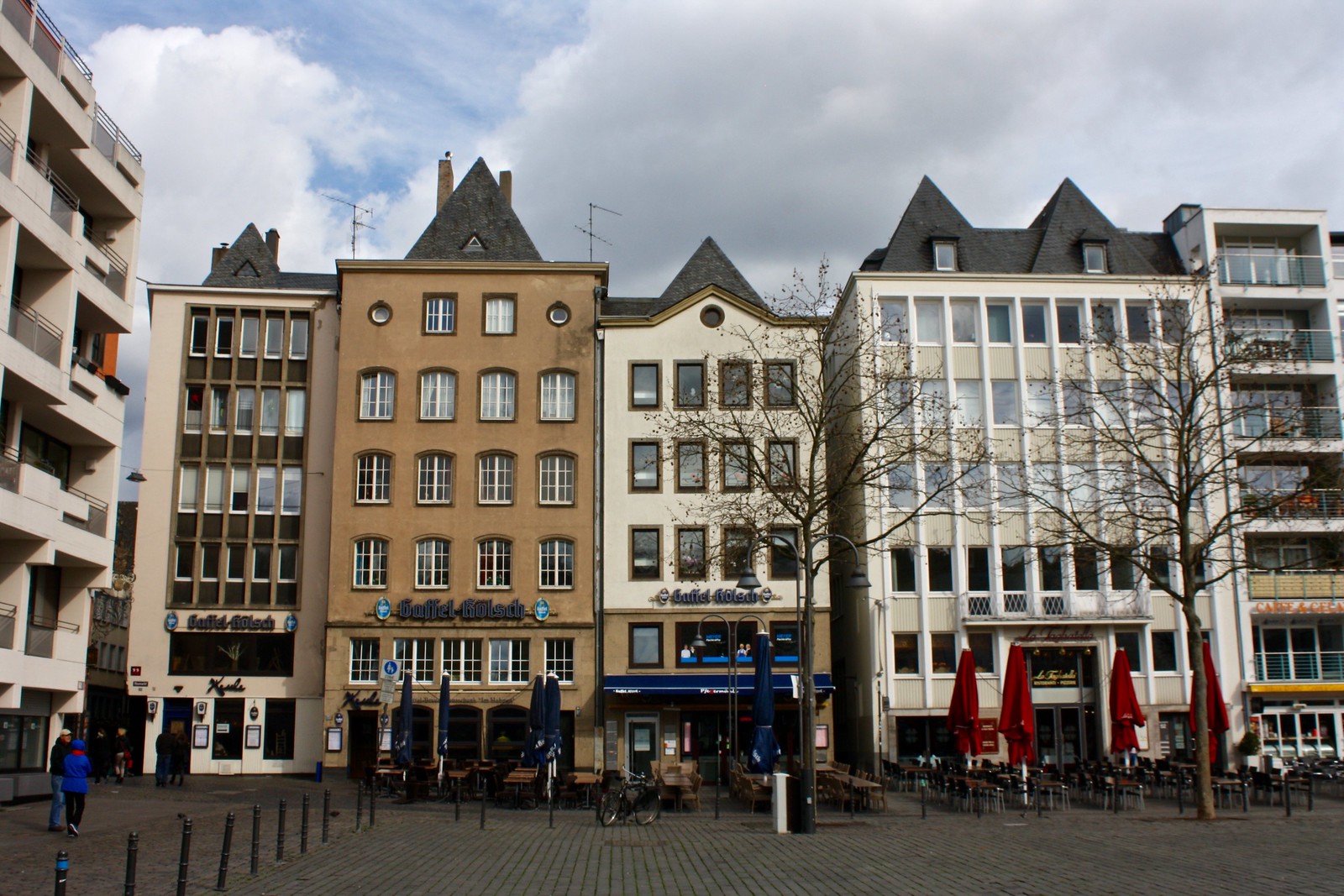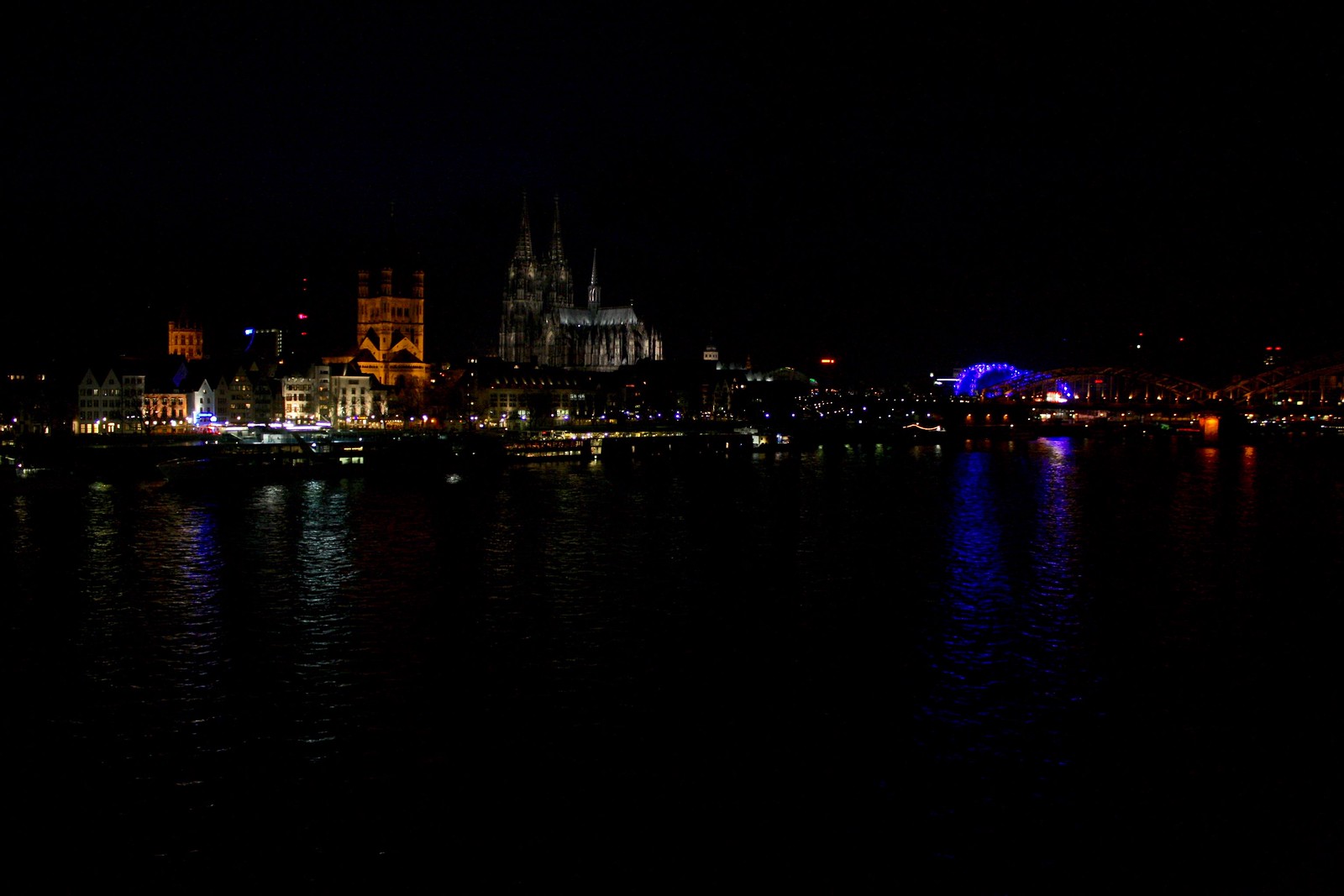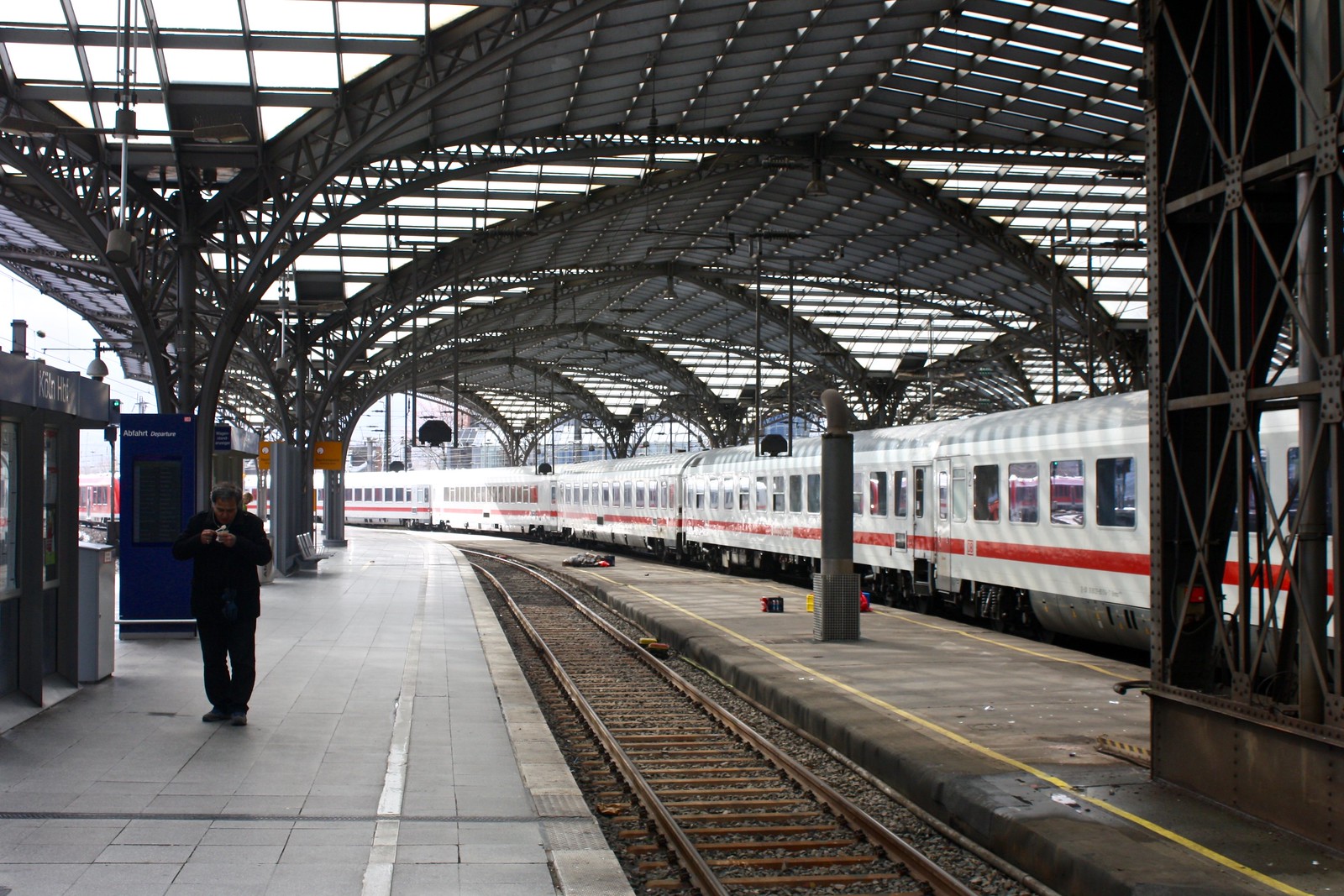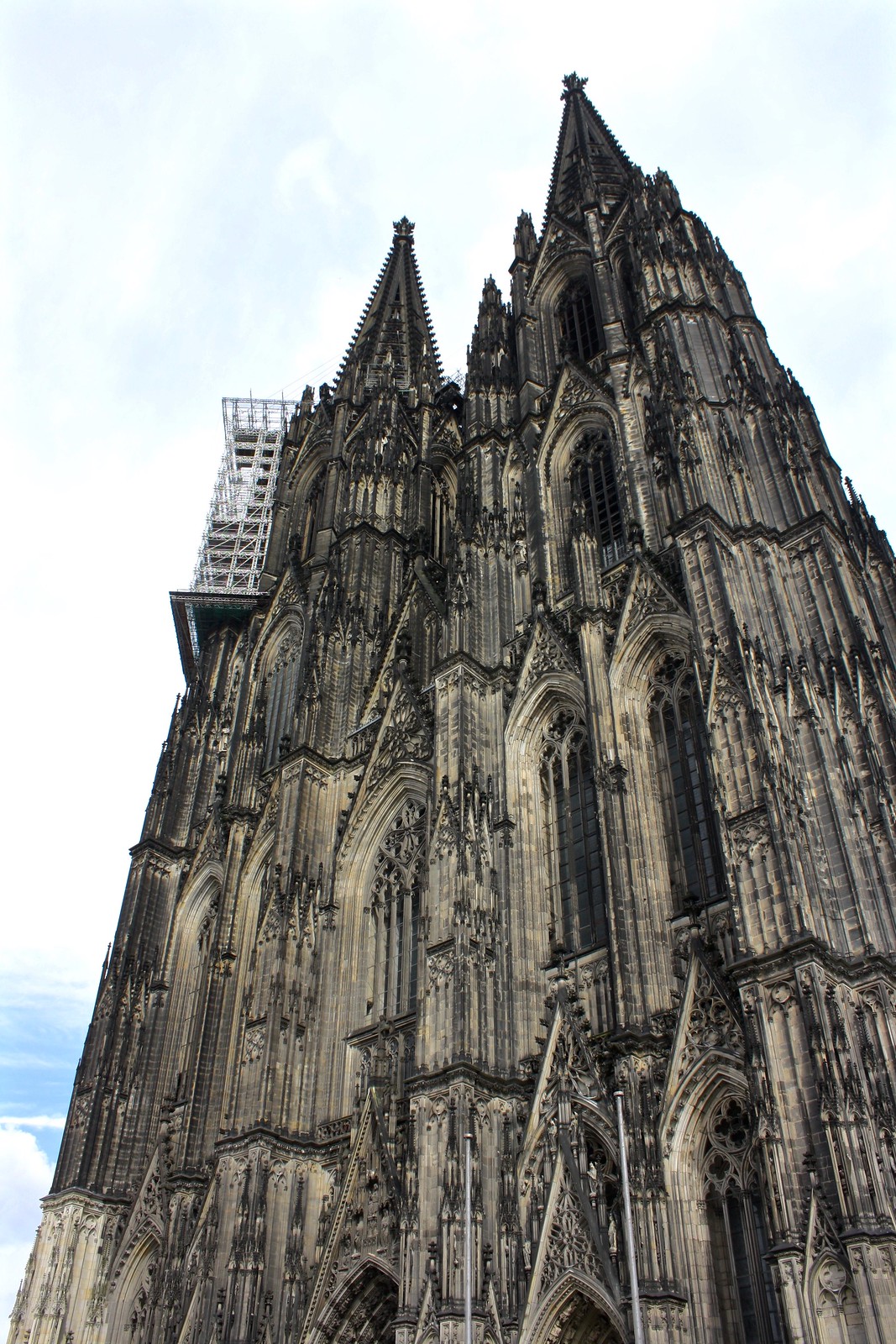For the longest time, Germany never showed up as a blip on my travel radar, even when I lived in
Santiago de Compostela, whose Ryanair airport hub has connections all across mainland Europe. I was focused primarily on getting to know northern Spain, especially Galicia, or neighboring countries like
France and
Portugal before finally
moving back to Texas.
Germany seemed so foreign and distant, even though it’s as close to Spain as Chicago is to Dallas. While my fellow
language assistants hopped from Amsterdam to Hamburg to Berlin, I focused on places like coastal Portugal,
southeastern France, or
central Italy—all southern European countries.
It’s not that I had anything
against Scandinavia, the British Isles, or central Europe…it’s just that I didn’t want to spend my limited savings and strategic vacation time going to places that I had almost no desire to visit. My true passions, the places that
I longed to explore and
made my heart ache with wanderlust, lay in the Mediterranean basin.
And yet I felt like I was wasting a huge opportunity in
not making a weekend trip out of, say, Germany or the Netherlands, since I was already on that side of the Atlantic and only had to worry about resisting the siren song of budget airlines—instead of a wallet-emptying trans-Atlantic flight.
It was
Cologne, Germany’s fourth-largest city, that would drag me out of my comfortable southern European routine and force me to re-acquaint myself with a little thing called
Culture Shock. It would be a wild ride full of ups and downs, but I don’t regret it at all.
Up: Santiago’s direct flights to Frankfurt
The only reason I even considered a trip to Germany in the first place was the direct flight that Ryanair operates between Santiago de Compostela and Frankfurt, a major financial center in the west-central part of the country. I’m not normally a spontaneous person but I was hooked ever since I first heard about the 40€ round-trip price. The history-rich cities of the lower Rhine valley have always intrigued me, so it was hard to pass up such an affordable flight to the region.
Down: Santiago’s midnight arrival in Frankfurt
There was little drawing me to Frankfurt proper, only cities like Aachen, Bonn, Cologne, and Düsseldorf, so my first challenge was dealing with how to get from the second-tier, middle-of-nowhere Frankfurt-Hahn airport to a place I actually wanted to be, like Cologne. Unfortunately, the flight from Santiago would land in Germany at 11 at night, making it almost impossible to catch some combination of shuttles, buses, and trains to Cologne at such a late hour.
Up: An excuse to hang out in Madrid
But I had already committed myself to seeing Germany before moving back to Texas, so I wasn’t about to just dump this trip in the trash can. Fortunately Ryanair also flies between
Madrid and Cologne, and I wasn’t opposed to sitting back and relaxing on a 5-hour
train ride to get to the Spanish capital, so I decided to make the most of things and book-end my time in Germany with daytrips and tapas nights in Madrid. By day, I checked off
Alcalá de Henares,
El Escorial, and the
Valley of the Fallen, and by night,
Madrid Food Tours took me to some of the most authentic and tasty restaurants in the historic core.
Down: Flight delayed by five hours
Once at the airport, I noticed that the flight had been pushed back by an hour or so, but didn’t think much of it while I chowed down on Burger King and mooched off the free wifi. That is, until I got to the boarding gate and learned it had been delayed almost five hours after the original scheduled departure. I never did learn exactly what happened, but I think the plane that was supposed to come to Madrid got sent to Mallorca or somewhere for repairs so we had to wait while they re-routed another plane to the Barajas airport. Cue dozens of Spaniards demanding formal complaint forms and Germans trying to speak to me in German, to no avail.
Up: Flight actually took off
A few hours in, a Ryanair representative began passing out sheets of paper with our EU rights as airline passengers on them, ultimately giving away 5€ food vouchers for the delay *whomp whomp*. A plane did arrive in the end, but as we were lining up to board the plane, this mysterious woman appeared out of nowhere and started handing out business cards for
Reclamador.es—a company that argues on your behalf with airlines, banks, and telephone companies to get you your refunds…for a fee, of course. I thought it was super sketchy but thought it couldn’t hurt to try once I was back home. Six months later I was 150€ richer!
Down: Flight landed at 2:30am
Of course, while I was glad I didn’t get stuck in Spain, there was that little problem of arriving at an ungodly hour when the hostel receptionist had long since turned in for the night. To make matters worse, it was cold and rainy—not exactly the best environment for loitering outside the front door in.
Up: Meeting fellow Americans staying at the same hostel
But as luck would have it, I met Livia and Taylor—two Americans who were language assistants in Spain like me and also staying at the same hostel. We all hit it off pretty fast and enjoyed having someone else to complain to in English since our seatmates were all Germans and Spaniards.
Down: Sleeping on the floor in the Köln Bonn Airport
After deciding against taking the 3am train into the city, we found a quiet area near the airport’s check-in desks to camp out in…and almost got run over by the floor cleaner machine once. In spite of the floodlights and half-hourly announcements, I still managed to get a solid hour or two of sleep using my peacoat and backpack as a pillow.
Up: German trains
With a fresh infusion of German
kaffee, we decided to say goodbye to our tile floor beds and venture out into the city. I was most excited to experience the famed German engineering and ride the trains, so I was glad to learn there was a train station inside the airport. We hopped on line 13 of the region’s S-Bahn commuter rail and dashed into the fertile
Rhine Valley, which was replete with farms and factories. More than anything else, I was impressed with simply how smooth and quiet the ride was: smooth, in contrast with the jiggly and vibrating sensation you get on Spanish trains, and quiet, in contrast with the no-inside-voices of Spain.
It wasn’t long before we would transfer to the
Stadtbahn, Cologne’s light rail system, and found our way to
Richard-Wagner-Straße (“Richard Wagner Street”)…how very German.
Down: Cold, windy, rainy weather
Coming from warm, sunny Madrid I was not prepared for what a Northern European early spring is actually like: cold, rainy, overcast, and windy. It may as well have been the depths of winter, but then again I’m a wussy Texan unaccustomed to the cold. This miserable weather put a real damper on my whole time in Germany as I was continually worrying about getting rained on or having to tote an umbrella around with me everywhere.
Up: The best hostel I have ever stayed at
But I really scored with the tranquil
Hostel Die Wohngemeinschaft, which advertises itself as NOT a party hostel and doesn’t even accept reservations from travelers under 21. When we arrived at 8am, the receptionist there was chipper, greeted us with perfect English, and wasn’t angry at all that we were trying to check into our rooms for the night before…the morning after.
Each of the hostel’s rooms were uniquely designed around a specific theme; I got put in the “circus” room which was weird but I walked past a private room while it was being cleaned and it had a spaceship theme! The cubbie-hole-style hostel bunkbeds were full-size, had their own charging stations and reading lights, and had heavy, light-blocking curtains.
Down: Accidentally sleeping away half the day
Once I had gotten all settled in, I couldn’t resist lying down for just a little bit, since, after all, when do you get a full-size bed to yourself in a hostel? Of course, we all know what “resting your eyes” really means…falling asleep for a 4-hour nap. When I woke up around noon I freaked out because not only had I lost my first night in Cologne, I also wasted away half of one of the few remaining days I had left! Still, I smiled to myself because I had just had one of the best naps of my life…and in a hostel, to boot.
Up: Marveling at the glorious cathedral
The cathedral of Cologne is what primarily draws tourists to the city; it’s also the most-visited monument in the entire country. What makes
Kölner Dom so interesting to me is that its construction began back in the Middle Ages but halted for centuries, leaving the church unfinished and bereft of its giant bell towers. But during the 1800s, the same nationalistic spirit that drove German unification inspired citizens to literally go back to the drawing board and finish what their medieval predecessors had started, using the original plans for the cathedral. Today the church has the tallest façade in the Christian world, and the spires—reached by 533 thigh-murdering steps—offer lovely views of the Rhineland.
This grandiose construction was intended to be a worthy house for the
Dreikönigsschrein, a dazzling golden reliquary that holds what is believed to be the bodies of the Three Wise Men. Now remember, holy relics in the Middles Ages were a Very Big Deal. For example, when King Louis IX of France obtained Jesus’ supposed Crown of Thorns, he had the
Sainte-Chapelle constructed in Paris to house it, a glorious hall of stained glass. Something very similar happened here in Cologne, which became a major pilgrimage center hundreds of years ago. The remains of the Magi were especially significant because in the Christian tradition they were the first to acknowledge Jesus as Lord.
On my way out of the church I giggled at the men in flowing red robes who had hanging from their necks wooden donation boxes with “
Für der Dom” written on them…and who clicked their tongues at tourists who failed to remove their hats.
Down: Getting hailed on
Walking from the hostel to the cathedral I felt like I might very well be joining those Three Kings in eternal repose as the rain showers quickly devolved into a hailstorm. You know, just the warm welcome I was expecting my first day in Germany. The following day, they had to shut down the plaza in front of the cathedral because intense winds from a storm had created the danger of stones falling off of the church!
Up: Enjoying a simple milchkaffee + sandwich lunch
Before I explored the cathedral I dipped in to a nearby Kamps franchise café-bakery for a mustard-heavy sandwich and a
milchkaffee, basically a latte. I felt very German asking for a “milk-coffee”…in German.
Down: Feeling helpless without polite words to use in German
That’s not to say I could speak German by any means. Yes, I crammed numbers and conversational words before I came, and I already knew how to pronounce most any word because of my background in linguistics (#NerdAlert), but at most restaurants I simply felt helpless because I had literally no idea what kind of polite words I was supposed to say for things like “I would like,” “Can you get me…” or “It was really delicious!” I felt like I couldn’t say anything at all but I didn’t want to be the Ugly American, either, and just revert to English.
Up: Romanesque churches
In addition to taking in the soaring Gothic cathedral, my inner architecture nerd was also looking forward to stepping inside a handful of the city’s famous
Twelve Romanesque Churches, which did not disappoint. There was the gigantic
Groß St. Martin, with its skyline-defining square tower;
St. Maria im Kapitol, whose striped arches and clover-leaf layout really set a medieval mood; and the Basilika St. Aposteln, a serene respite from the bustling Neumarkt square.
Down: 95% of the city was bombed out in World War II
As happened to many German cities during World War II, the vast majority of Cologne’s
altstadt or old town was leveled by the Allied bombing campaigns that brought Nazi Germany to its knees. By the end of the war, Cologne was all but abandoned except for the cathedral—which was fortunately spared. After the war, Germans returned to Cologne and rebuilt their home, but as a result of the bombings and rapid re-construction, most of the city today reflects the gray, concrete-heavy postwar style, which honestly hasn’t aged well.
And whenever I entered a Romanesque church, I couldn’t help but grieve for the cultural treasures that were lost in the war, as almost all of the twelve churches were utterly destroyed in the bombardment. Yes, they have been excellently rebuilt and restored to what they would have looked like in medieval times—but freshly-cut stone and squeaky-clean ceilings are no match for the rich character and patina a church gains over almost a thousand years of weekly worship.
Up: Successfully tipping German-style
My first
full night *ahem* in Cologne I stopped off for dinner at
Brauhaus Sion, a famous but touristy establishment in the old town. The bill came up to 13,30€ and I wanted to leave a 1,70€ tip, so I put into practice what I had read before arrival and handed my waiter a 20€ note and directly asked for 5€ back in change. It’s
the little things like this—the small cultural cues—that make you feel like you’re getting to know a place, even if you’re only there for a few days.
Down: German food is bland
I went to Brauhaus Sion specifically to try the regional specialty,
Himmel und Ääde, literally “heaven and earth,” in reference to the stewed apples (from above) and mashed potatoes (from below) served on a dish alongside slices of black pudding sausage topped with fried onions. German comfort food…I guess, but I wasn’t impressed.
Up: German breakfasts are lovely
But German cuisine redeemed itself at breakfast the next day. I ran into Livia and Taylor at the hostel’s dining room and we chatted about mishaps and museums over a glorious spread of warm bread buns, real butter, cheeses, various cold cuts, preserves, Nutella, cool cucumbers, fruit…and coffee, tea, and O.J., of course. Coming from Spain, where breakfast is usually limited to a sugary pastry, toast with grated tomato, or fried churros, I welcomed this variety of healthy, filling options to begin the day with.
Have you ever been on a trip that was a huge disaster? How did you manage to salvage things? Share your experiences in the comments section down below!
